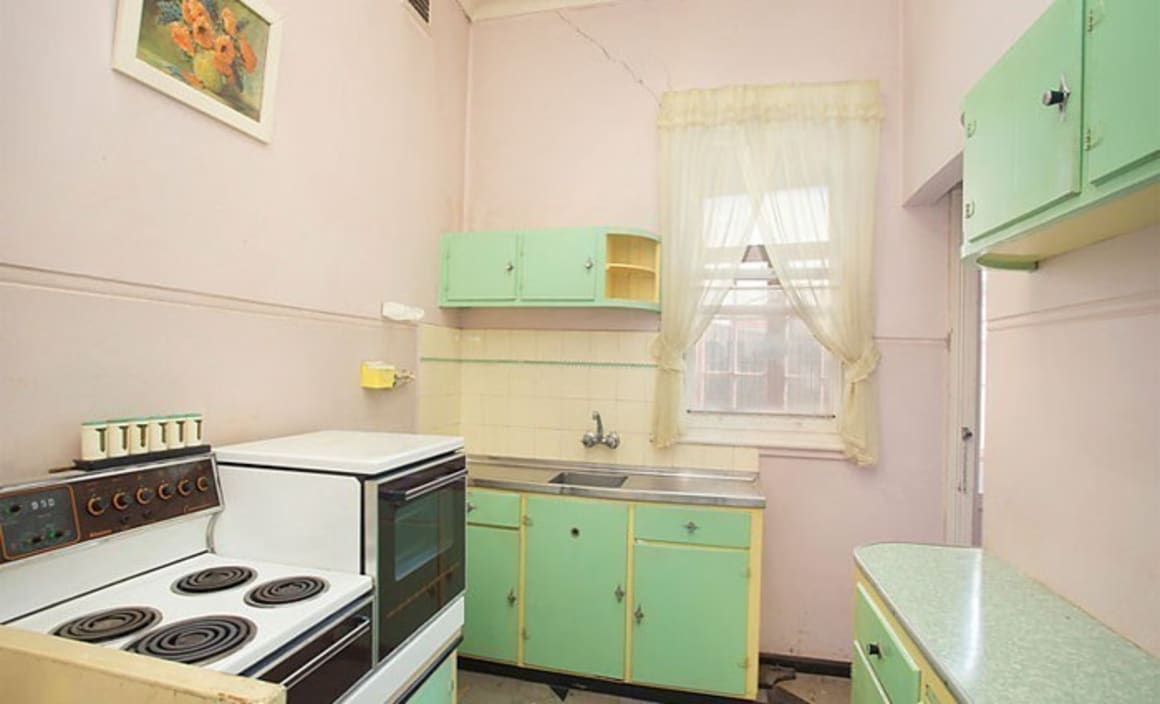Knockout original 1950s kitchen in Lilyfield auction

A Lilyfield home with authentic 1950's kitchen with breakfast nook has been listed for 9 May auction.
The 1900 Federation home on 215 square metre block has three bedrooms, the main with window seat.
There are high patterned ceilings and cornices.
Its level back garden finishes off the package with lawn and Hills Hoist
All five minute walk to parks, supermarket and the light rail.
The 16 Starling Street offering is being offered through Pilcher Residential with price guidance over $1.05 million.
"Owned by the same family since 1946, the house is being sold with its vintage furniture included," listing agent Simon Pilcher said.
On the Saturday, after bidding opened at $1.1 million, an original 1950s home at fetched $1.52 million for a classic 1950s family home in Eastwood.
Marketed as a "quintessential Aussie red-brick house," the three-bedroom home on a 778-square-metre block at 205 North Road had 18 registered bidders.
It last sold at 6400 pounds in the 1960s, reported the SMH's 50s aficionado, Anna Anderson.
After the buyers - who were accompanied by parents visiting from China - indicated plans to keep and extend, the BresicWhitney agency tweeted: New Life: "Red Brick Survivor" passed to the next generation of Aussie families in #Eastwood.
The last time interest rates were at current levels was in the 1950s and 1960s. In March 1960 the minimum interest rate applied on loans accepted by authorised dealers on the short term money market was 2.69% with the maximum rate of 3.38% and an implied weighted average rate of 2.70%.
Certainly very low interest rates were common through the 1940s, 1950s and most of the 1960s. For instance in 1952, the 3-month commercial bank deposit rate was just 0.71 per cent and even in 1956 it had lifted to only 1.25%. Housing loan rates held at 5.00% through 1959 and 1960. Trading bank overdraft rates were between 5.00-6.00% in the late 1950s/early 1960s, according to the Commonwealth Bank of Australia Statistical Bulletins.
A key reason why interest rates were low was because wages and prices were under control. In the 1958/59 year, wages rose by 2.5%, retail prices rose by 2.6% and the consumer price index rose by 1.9%, Craig James the chief economist at CommSec once noted.